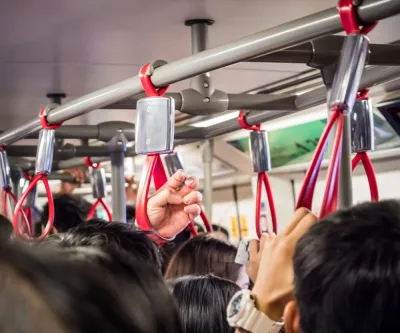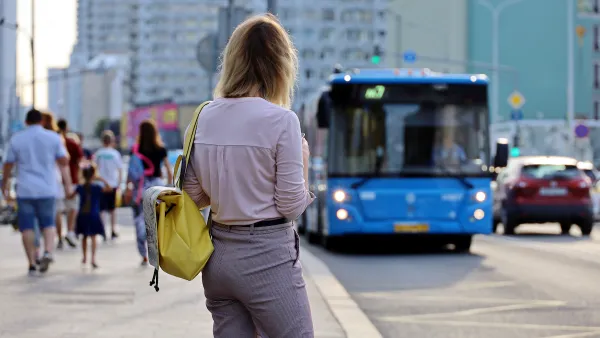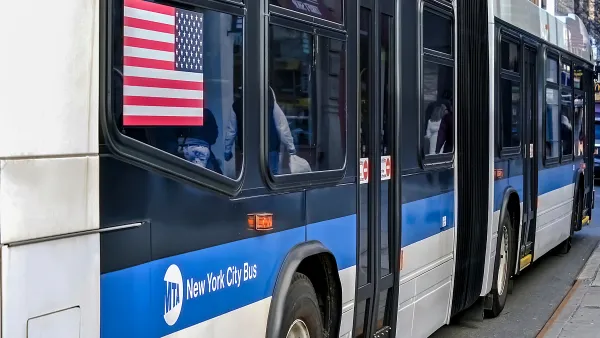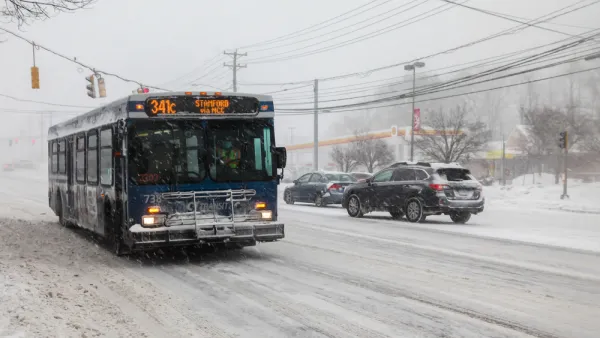Fare-free programs that apply to buses and not trains create a fragmented transit system and encourage more people to use slower, less efficient modes.

The idea of fare-free transit is nothing new, and has been gaining more traction in cities around the country in the last few years. However, Jarrett Walker, writing in Bloomberg CityLab, calls attention to what Walker believes could be a troubling trend: making fare free on buses, but not trains. “If that trend spreads, we should expect some bad consequences,” Walker writes.
As Walker explains, Washington, D.C. and Boston are both exploring free bus transit, but have kept fares on their train systems. According to Walker, “A certain kind of capitalist would say this is fine: The train is faster, so it should cost more. But when people use a slower service rather than a faster one, it’s not just bad for them. It’s also bad for the transit agency budget, which means it’s bad for everyone who uses transit or benefits from it.”
Buses, which are smaller, will reach capacity more quickly. “Trains, on the other hand, are much more likely to have surplus capacity, especially now that so many suburban commuters who used to pack them are working from home, so they could be serving many of the same people at lower cost.”
At the same time, the distinction between buses and rails also raises questions about who each mode serves. Additionally, many trips require combining both bus and train, and lower-income riders are more likely to have more dispersed travel patterns that are often better served by buses. For these and other reasons, Walker argues, the free fare debate should take place around the whole transit network. “An efficient and therefore liberating urban transit network encourages people to think about the total network, and to use buses or trains according to which is better for each part of their trip.”
FULL STORY: When Buses Are Free But Trains Aren’t

Analysis: Cybertruck Fatality Rate Far Exceeds That of Ford Pinto
The Tesla Cybertruck was recalled seven times last year.

National Parks Layoffs Will Cause Communities to Lose Billions
Thousands of essential park workers were laid off this week, just before the busy spring break season.

Retro-silient?: America’s First “Eco-burb,” The Woodlands Turns 50
A master-planned community north of Houston offers lessons on green infrastructure and resilient design, but falls short of its founder’s lofty affordability and walkability goals.

Test News Post 1
This is a summary

Analysis: Cybertruck Fatality Rate Far Exceeds That of Ford Pinto
The Tesla Cybertruck was recalled seven times last year.

Test News Headline 46
Test for the image on the front page.
Urban Design for Planners 1: Software Tools
This six-course series explores essential urban design concepts using open source software and equips planners with the tools they need to participate fully in the urban design process.
Planning for Universal Design
Learn the tools for implementing Universal Design in planning regulations.
EMC Planning Group, Inc.
Planetizen
Planetizen
Mpact (formerly Rail~Volution)
Great Falls Development Authority, Inc.
HUDs Office of Policy Development and Research
NYU Wagner Graduate School of Public Service




























